When, why and how to prune Lavender, plus you’ll see what unpruned overgrown Lavender looks like so you don’t make this mistake.
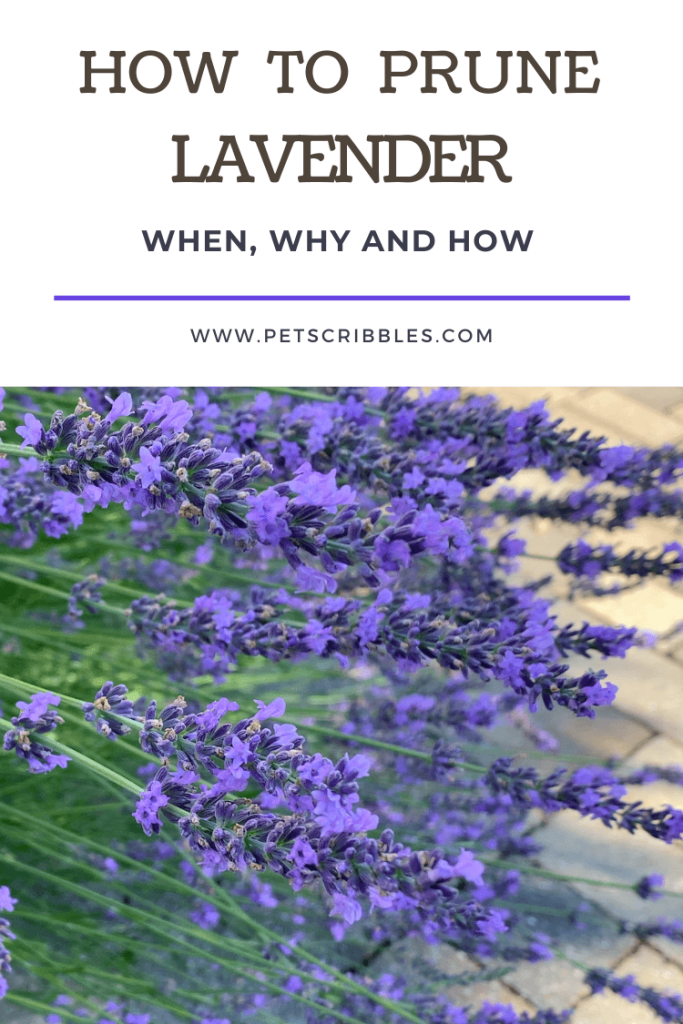
This article covers when, why and how to prune lavender. I’ll discuss what time of year is best for Lavender pruning as well as why pruning Lavender is important.
Next, I’ll explain exactly how to prune Lavender in a few easy steps.
Finally, I’ll show you an unpruned, overgrown Lavender with many large woody stems — a great example of what you don’t want!
When to Prune Lavender
So when is the best time to prune Lavender? You actually have a few options to choose from.
One of the best times to prune Lavender is late Summer or early Fall, at least six weeks before the first frost occurs in your area. Some gardeners will do their pruning in mid Summer, when harvesting their Lavender for drying.
For me, here in zone 7, southern New Jersey, I can prune in the Fall since the weather usually remains warm into late Fall. The flowers are finished blooming, and I can cut these back to get them ready for the Winter season.
If you’ve already passed the window to prune now in the Fall because your first frost is fast approaching — don’t fret!
Because another good time to prune Lavender is in the Spring, especially if you live in a colder, Northern area. The steps for Spring pruning are similar to pruning in the Fall and I’ll explain that in a moment.
Remember: As much as it’s tempting to let your Lavender grow and get larger, it’s more important to give your Lavender a good pruning at least once a year. Choose when you want to prune your Lavender and mark it on your calendar if you need to.
Why You Should Prune Lavender
If Lavender isn’t cut back annually, the stems can grow leggy and flop onto the ground. Leggy stems also occur if the plant isn’t in full sun.
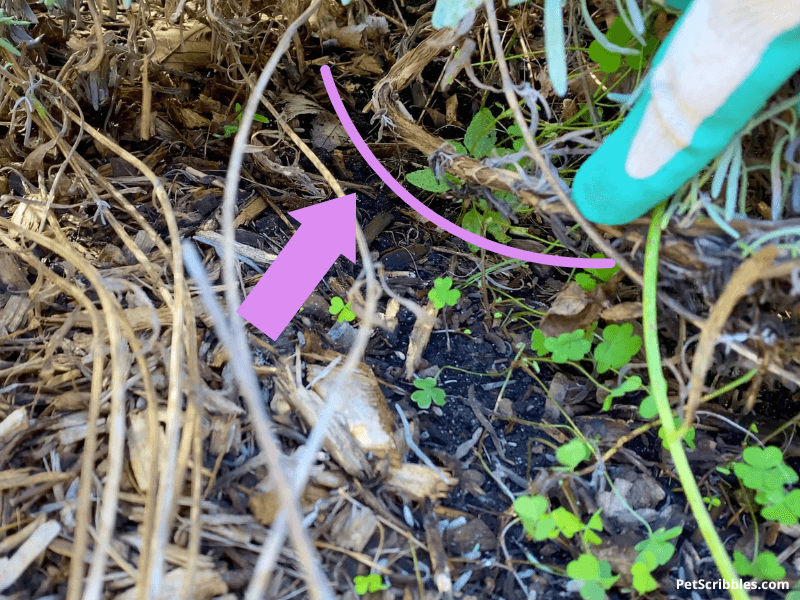
Also, if the plant becomes large and overgrown, any of the stems not getting sun — usually the lower stems — will become leggy as well. These leggy stems also develop a woody base, and new Lavender growth will not grow out of that wood.
Let me show you what I mean.
Here is a Lavender stem with a very woody base. You’ll see that indeed there is live growth that has grown out from the wood. But there isn’t any fresh growth that will develop “on” the woody part itself.
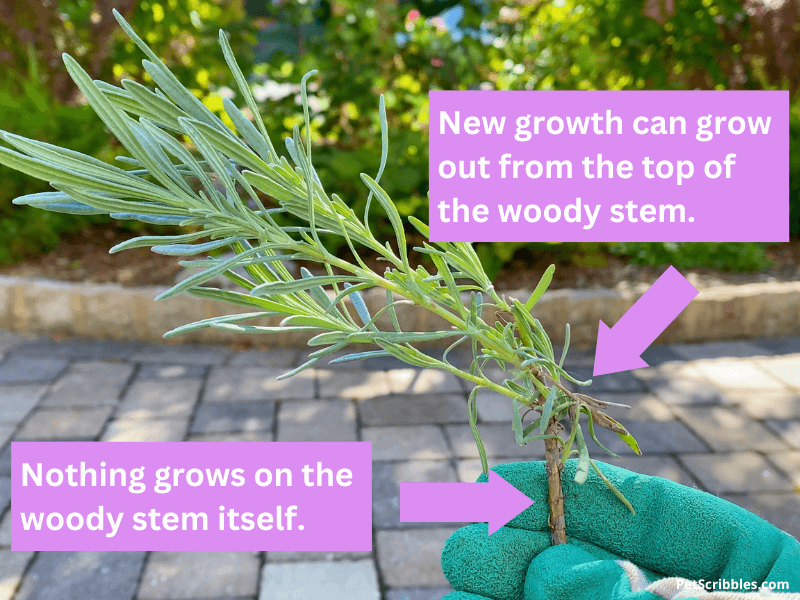
Now let’s look at the greenish-gray part of the stems.
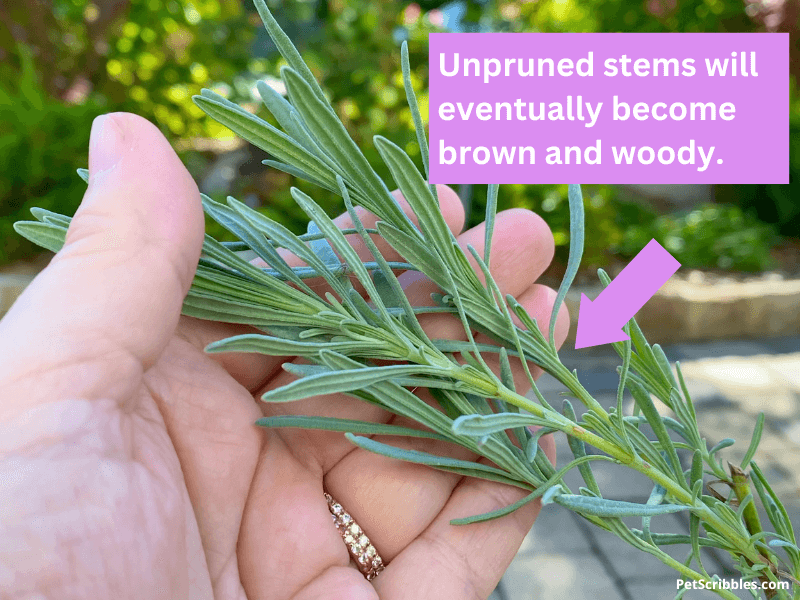
If I didn’t prune any of these stems back, as they mature, the green soft stems would become brown and woody over time. So that’s how you get leggy, woody stems.
Yes, your Lavender will still continue to grow — and thrive in many cases — if it hasn’t been pruned back hard over the years. But, your Lavender just won’t look good when it’s not in bloom.
How do I know?
Because this is exactly what happened to my own Lavender plants in my front yard garden beds.
And stay tuned, because I’m going to show you exactly how bad they are right now in terms of being woody. It’s pretty amazing, and not in a good way!
How to prune Lavender in a few easy steps
I’m using my Lavender Phenomenal plants to show you how to prune Lavender, and this pruning works no matter which type of hardy Lavender you have.
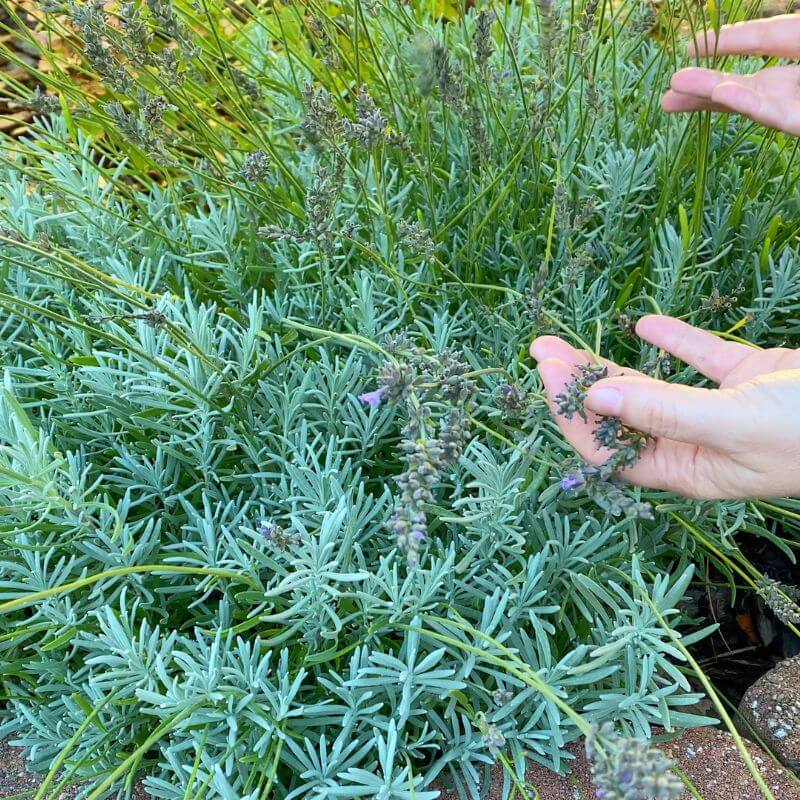
As an aside — I love Lavender Phenomenal because it can handle weather extremes better than other Lavenders. It handles heat and humidity flawlessly, and it remains evergreen — or ever-gray as many gardeners call it — during the Winter season. Even when snow gets dumped on it, it doesn’t get crushed! Read all about Lavender Phenomenal in my article here: Lavender Phenomenal: The Best Lavender for Heat and Humidity.
What’s the goal when pruning Lavender?
Answer: To remove the dead stems and dried flowers plus some of the living stems, cutting the Lavender down to a nice small dome-shaped mound.
Pruning in this way reduces the chance of any woody base becoming a problem.
So, there will be a small woody base at the very bottom of the stems. To see what it looks like, if you gently pull the plant apart, you’ll see it.
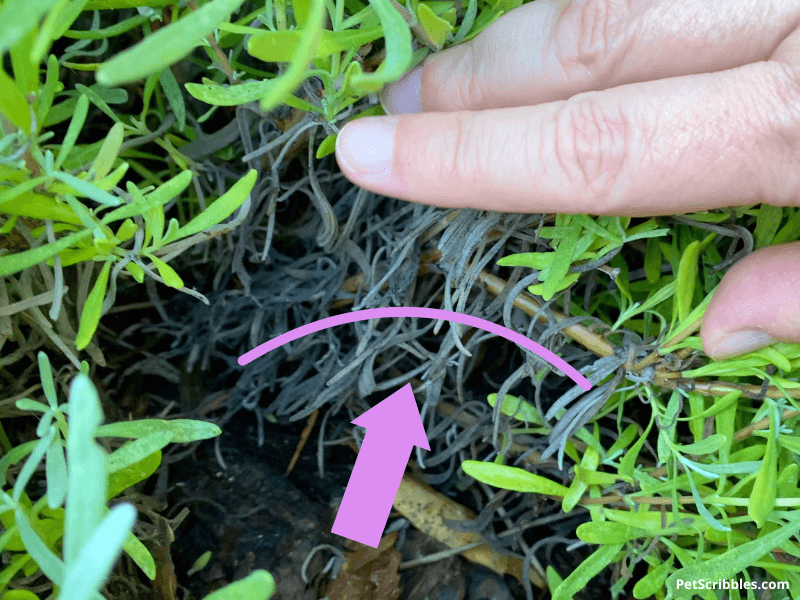
These Lavender plants were planted last year, so they’re only a couple of years old, and I’m determined not to let them develop woody stems like the ones in my front yard have.
Tools Needed
- Hand Pruners or Garden Snips
- Hedge Trimmers (if you have many plants, this makes quick work of the project)
- Garden Gloves
If you have large plants — like I do in the front yard — make sure to wear long sleeves to avoid getting scratched as the stems are rather stiff.
How to Prune Lavender — Step One
First — Remove the dead stems.
Grab a bunch of dead stems with one hand and just cut them off the plant, including some of the healthy living green growth.
You don’t have to be super precise with removing the stems because this is only the first step in cutting your Lavender back.
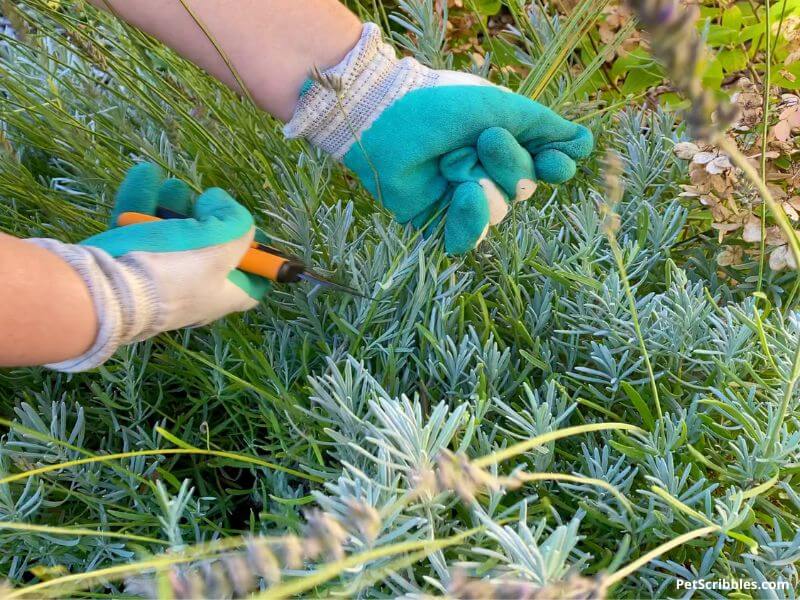
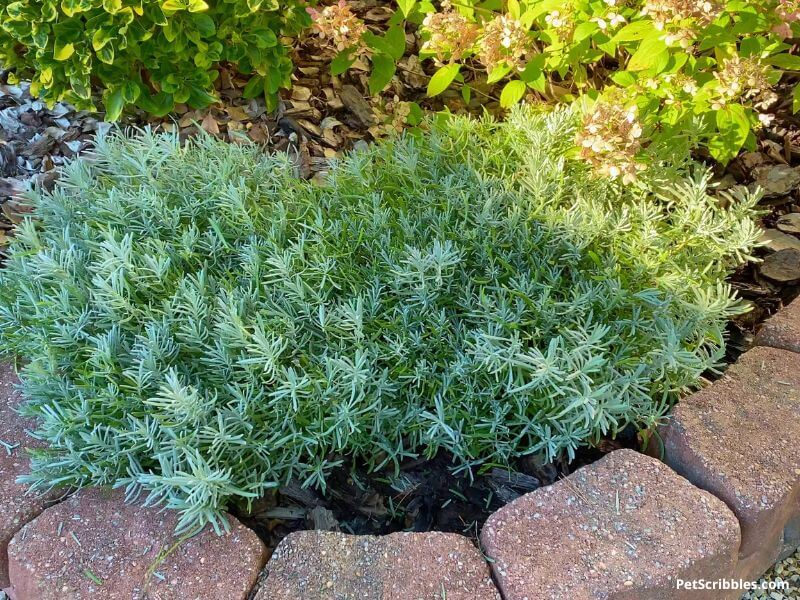
How to Prune Lavender — Step Two
Second — Examine each plant — if you have more than one — and determine the shape you want to achieve.
Some gardeners will cut them in a dome shape — think half circle, others will cut them in more of a rounded shape. It’s up to you.
Personally, I don’t fuss that much with wanting a perfect shape. Plants don’t grow in perfect shapes in the wild!
How far should you cut down into Lavender when pruning?
I cut down the Lavender leaving about two or three inches at the most of green living stems above the woody base of those stems.
Now that you cut some of the plant back, you can get a better look to determine where the woody base ends and the new or current growth begins.
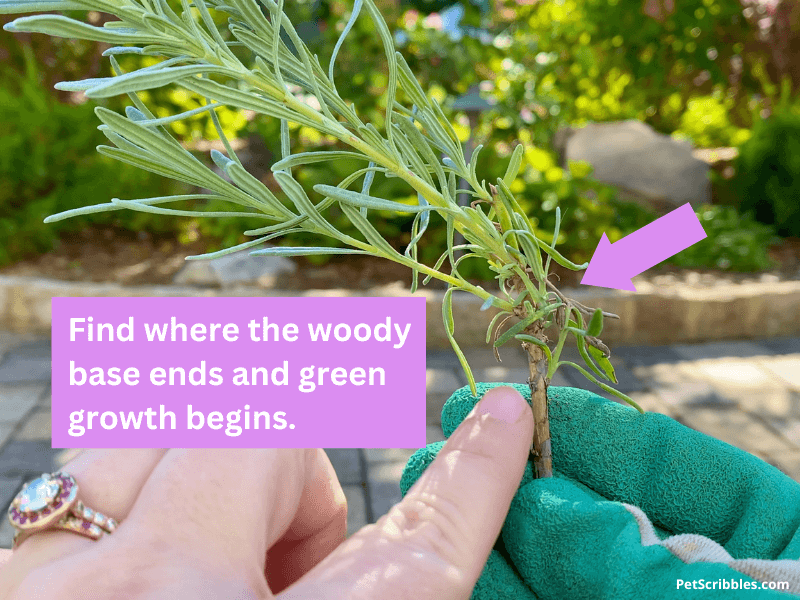
Once you find where that is, go up the stem a bit — anywhere from one to three inches — and cut above that.
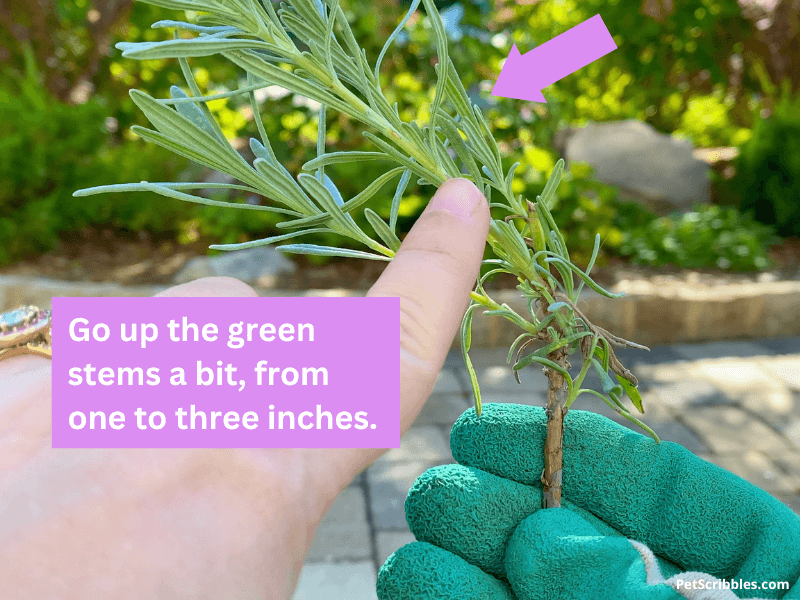
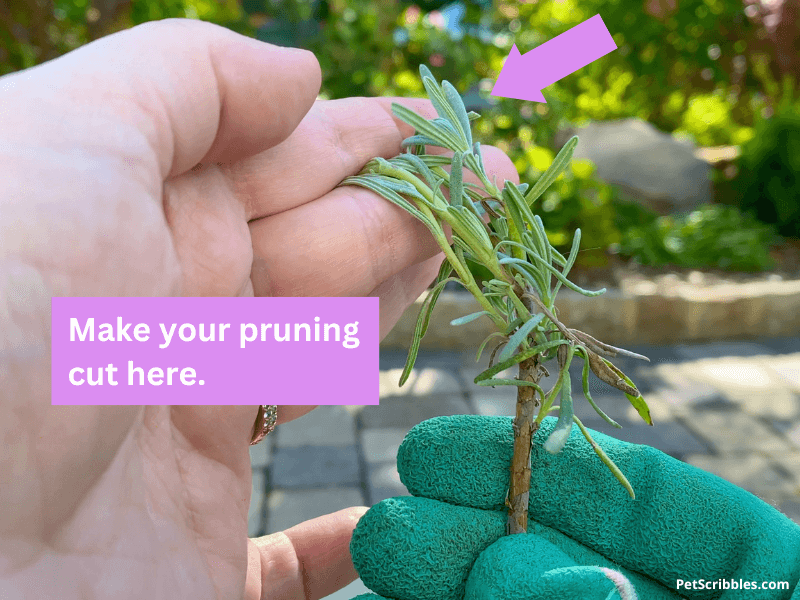
As you prune, keep the middle slightly higher than the sides, aiming for that dome shape I mentioned. The outside perimeter of the plant can be as little as just one inch of green growth above the woody base of the stems.
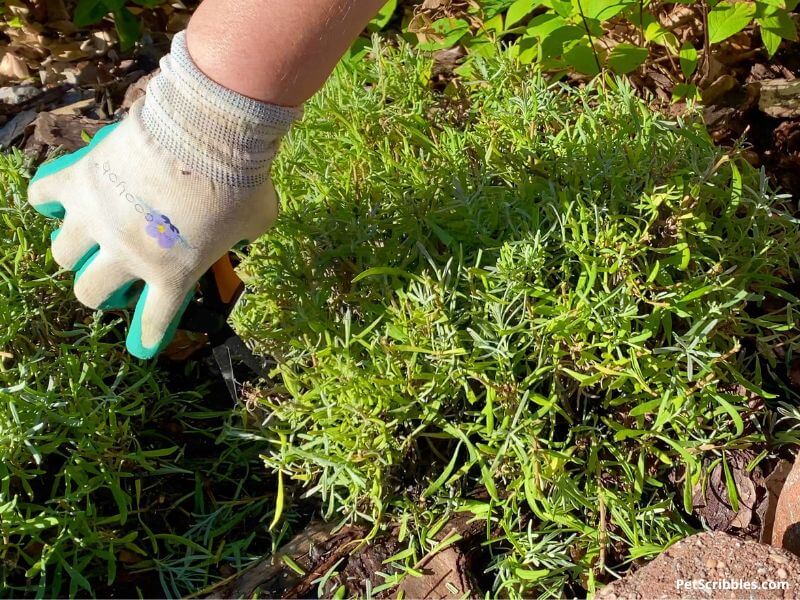
Shape it as best you can and remember what I said: plants don’t grow in perfect shapes in the wild, so don’t fret too much about pruning perfect shapes.
The most important point about pruning Lavender is this: Don’t be afraid of pruning too much, thinking you might damage the plant. Most people don’t prune their Lavender as hard as they should.
As long as you don’t cut the plants back into the wood, you’ll be fine.
And as long as you leave at least an inch of healthy stems — up to two or three inches of healthy stems at the most in the center — your Lavender will grow back nicely.
Pruning encourages fresh growth, and that growth will be bushy and full.
Depending on the Lavender variety — and there are many of them — your Lavender may grow large and wide, or it may stay small and compact. Either way, you want to really cut it down hard when you prune.
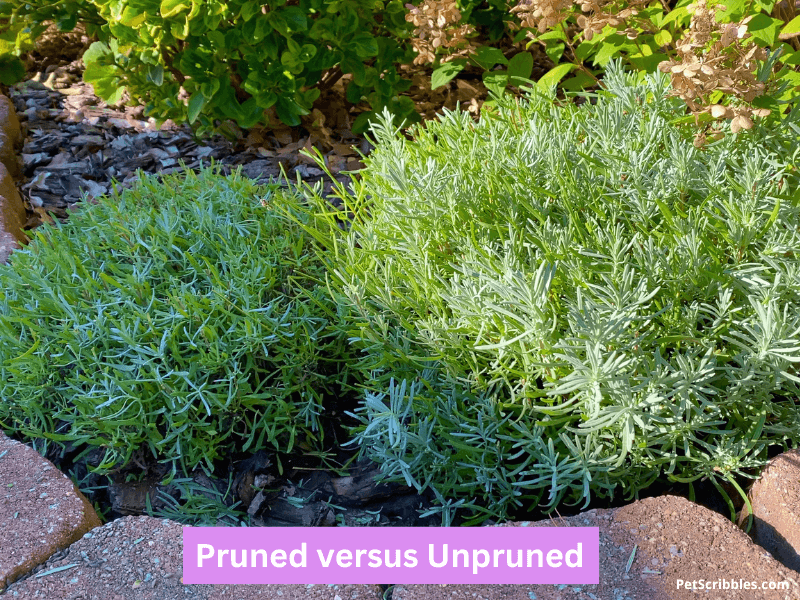
How to Prune Lavender in the Spring
There’s a couple of things to remember if you choose to do your Lavender pruning in the Spring.
Prune Lavender in early to mid-Spring. However, to be sure you’re not cutting into dead wood — especially with Lavender varieties that are not evergreen for you in the Winter — wait to prune until you begin to see new growth on your plants.
This way, you’ll be able to tell the difference between the healthy part of the stems versus the dead wood, so that you don’t cut down into the dead wood by accident.
Once you’re seeing new growth? Do all of the same steps explained above for Fall pruning.
When do I prune my Lavender?
I prune in the Fall, but I’m also going to give these plants a good look in the Spring. I may trim them lightly in the Spring too.
Not to be overly anal about the pruning, but after seeing how badly my Lavender in the front yard became with limited pruning — I don’t want to go through that ever again.
So for me, a hard pruning in the late Summer or early Fall, followed by a lighter trim in the early Spring if needed, is what I will do going forward.
Does Lavender need fertilizer?
The final step you may want to do is to fertilize your Lavender.
Lavender doesn’t need a lot of fertilizer, as it grows best in lean soil. However, adding some slow-release organic fertilizer around the perimeter of each plant will nourish the soil over time without any harm to the Lavender plants.
I use Espoma Plant-tone for this purpose, but there are several good options available.
Unpruned, overgrown Lavender with large woody stems
Now it’s time to see some excellent examples of horrible woody Lavender plants!
And they’re growing in my own gardens in the front yard!
In the following video, I cover all of the steps outlined above for pruning Lavender and then I show you the horrible overgrown Lavender — and It. Is. Awful.
You can click below to watch the video, and if you want to just see the woody Lavender you can start the video at the 8:53 minute mark.
I hope these pruning guidelines help you. If you have any questions, please leave them below in the comments or in the video comment section on my YouTube channel.
Happy gardening!

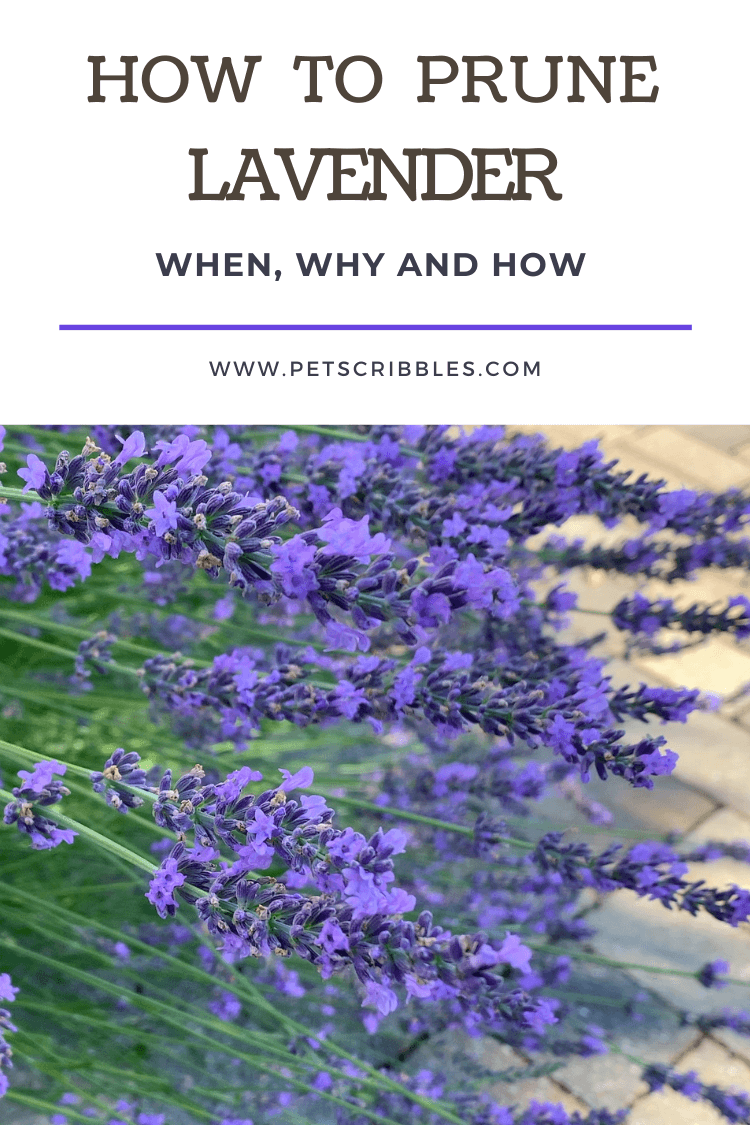
Leave a Reply